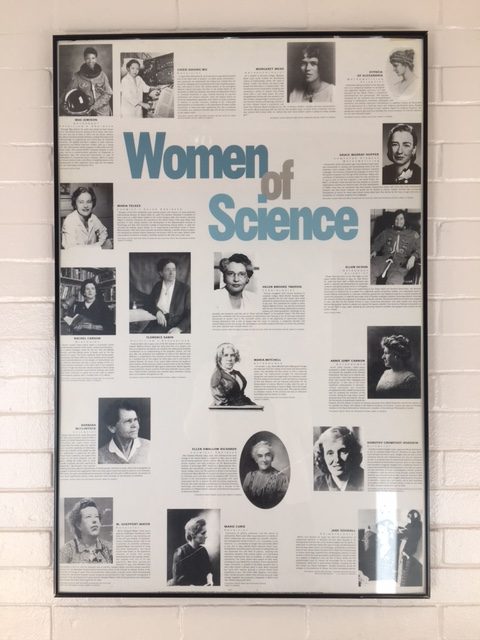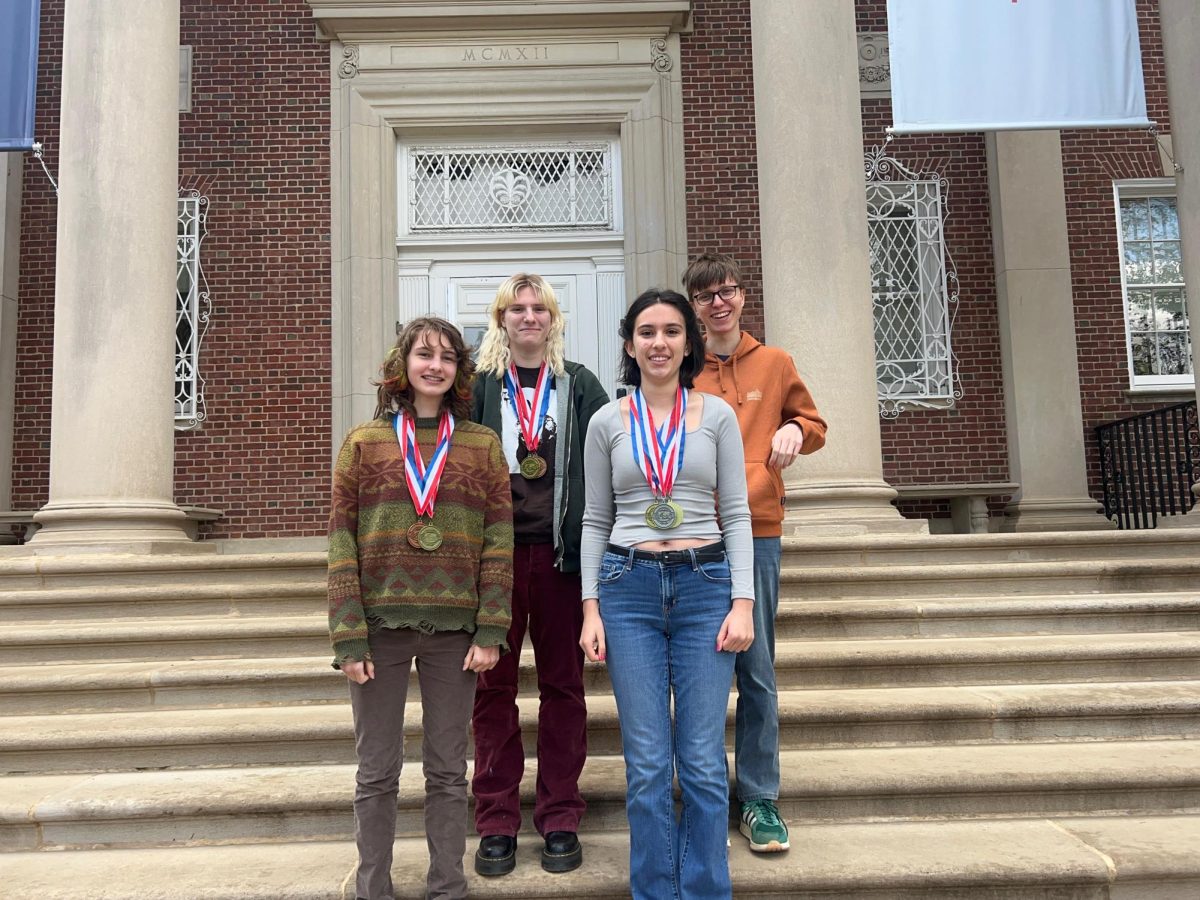Society has perceived science throughout history as a male dominated field. Though there are many influential women in science, a divide between men and women in how they are viewed by the scientific community still remains. Therefore, many women were discouraged from pursuing the STEM fields as a career option. Without female role models to inspire them, younger generations have tended to choose other disciplines of study. At WIS, however, women dominate the science department and classrooms.
The female science teachers at WIS have had to face obstacles and overcome societal pressures throughout their career. Though there have been improvements made to how women are treated in science and society there is still a stigma regarding women’s value in the scientific community. Margaret Hoeger, a chemistry teacher at WIS, always felt as though her community including her teachers and peers supported her. However, Hoeger recalled that her fellow colleagues and friends did not always have the same experience as her. One of her colleagues, a female professor, was told that when publishing articles she should not hyphenate her name. If she had hyphenated her name the scientific community could have known that it was a woman writing the piece and henceforth not have read it or perhaps believed it had less value than other pieces.
Sadly, this advice was not missguided. Most of research funding is awarded to men as opposed to women, according to an article written in The Conversation, The study highlighted that “around 75-85% of the funding was awarded to male principal investigators.” In addition to this, the women that do get funding often are given less money than their male colleagues. This unequal treatment and underlying sexist behavior is just one of the many obstacles that women in science, and many other fields, have to overcome.
When dealing with harassment and degradation, it takes courage and discipline for women to speak out against injustices that they themselves are experiencing or that they have witnessed. Emily Veres, a Biology teacher at WIS, told of an incident in one of her first teaching jobs where she was being discriminated against based on her gender.
When a male colleague was making her life difficult and targeting her she decided to take a risk and tell the school. The school was not supportive and she eventually decided to leave. What was difficult was that speaking out put her entire career in jeopardy. By accusing a stronghold in her school community of such behavior she was at risk for not getting a letter of recommendation for another job or of being branded as “difficult”. When asked about how she dealt with it, she said, “Very carefully. But ultimately you have to remind yourself that you’re here for the kids and no matter what craziness has happened in a staff meeting or in something that has happened in between classes or the day before, when you step into your classroom it’s your job to be a good role model for them.”
In being a good role model for future generations, it’s important to remember that science is not something that should divide people, but rather bring them together.
One thing that Hoeger and Veres definitely have in common is their love of science. Both felt that science was never something they actively chose to pursue but rather was something that chose them. In their minds, science is a field that has always been filled with wonder and excitement, whether it was biology or chemistry.
Their passion for science is infectious. For this reason, they encourage people of any genders and backgrounds who are interested in science to pursue it. In looking towards the future for science, Hoeger believes that it is crucial that there are a diversity of people solving problems, no matter their background or gender.
Similarly, Veres highlights the importance of diversity in the sciences. “If we can’t value the knowledge that all members of our community bring in whether they identify as female or identify as male, regardless of their sexual orientation, or their cultural or ethnic background. If we can’t value knowledge from anybody then that’s going to be hopeless.” For this reason, science lies in the hands of the future generation, male or female.
When asking a female science student at WIS what she thinks about the adversity she might have to face in the future because of her gender, she seemed generally optimistic. Lucy Porter is a student at WIS who has aspirations to become a surgeon and has always been interested in pursuing science as a career option. In her pursuit of a career in science, Porter has not felt as though being a woman has limited her in any way. However, she is in no way unaware of the barriers that women have had to face throughout history, but she has found many role models both in her teachers and in the female scientists who have come before her.
The poster that hangs in the Carriage House where the science classrooms are located has pictures and descriptions of influential women in science. When looking at this poster, Porter feels as though it portrays that “there are influential women who have changed the sciences forever and it shows that if they can do it you can do it too, and that is something to work towards.”
Despite the abundance of female science teachers and students at WIS, for the physics classes this trend is not applicable. With a majority of male students in the physics classrooms and only male physics teachers it raises the question regarding why fewer women choose to study physics. One female physics student at WIS, who has chosen to remain nameless, believes that there is an intimidation factor which has accumulated as a result of a historical bias against women.
Throughout history, particularly in physics, the main problem solvers and discoverers were men. This history has in a sense already preset women’s knowledge of physics. However, according to the student this pattern of women not pursuing physics at WIS has been changing, and that today more than a third of her class consists of young women.
Despite theses changes to the norm at WIS, there seems to still be a stigma around women in science particularly in physics. When presented with the statistic that only 11.1 percent of physicists and astronomers in the world are women, and that only 7.9 percent of mechanical engineers in the world are women, the student said she felt the following way; “As a female physics student [it does not make me feel] very confident about my future in physics… But since we are a minority it makes me want to push more to break that standard.” In looking towards how women have and will continue to “break that standard” set in place it is important to look at science as a field.
According to the students and teachers at WIS, science should not be a field which is influenced by gender biases, and people’s pursuit of science as a career should also not be influenced by their race or their sexuality. In science, your background does not matter but rather your tenacity and ability to solve problems determines your success as a scientist. For this reason science is ultimately a great equalizer. No matter who you are, if you love science, past misconceptions and societal biases do not influence how good of a scientist you are or can be.


































































